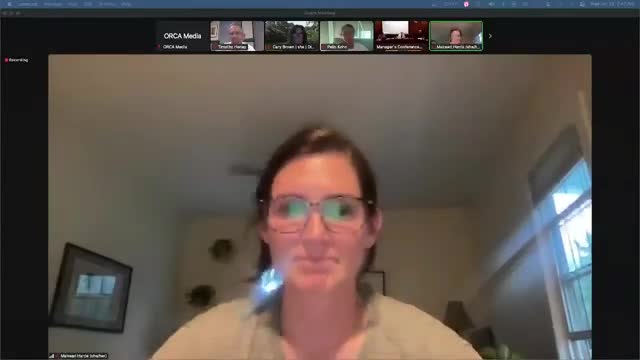Residents Demand Urgent Action on Dangerous Cumming Street Traffic
June 27, 2024 | Montpelier City, Washington County, Vermont

This article was created by AI summarizing key points discussed. AI makes mistakes, so for full details and context, please refer to the video of the full meeting. Please report any errors so we can fix them. Report an error »

During a recent city council meeting, residents of Cumming Street voiced urgent concerns regarding traffic safety and the need for speed bumps to mitigate speeding vehicles in their neighborhood. The discussion was prompted by a formal request from residents who have experienced multiple incidents, including a truck crashing into a home and frequent speeding by delivery vehicles and local traffic.
Piper Nevins and Patricia Shagnon, residents of Cumming Street, highlighted the dangers posed by speeding vehicles, particularly for children and pets in the area. They emphasized that the street serves as a primary access point to the North Branch trails, which attracts pedestrians and cyclists, yet lacks sidewalks, making it perilous for non-motorized users. The couple urged the council to consider installing speed bumps in conjunction with planned paving work later this year.
The council acknowledged that this was the first request for traffic calming measures since the adoption of a new policy aimed at evaluating such requests. While the policy requires data collection and neighborhood support, several council members expressed concern over the lengthy process, especially given the documented history of incidents on Cumming Street dating back to 2017.
Council members discussed the possibility of expediting the process, with suggestions for temporary measures to enhance safety while the formal evaluation continues. Some proposed using movable traffic calming devices or increasing police enforcement to address immediate safety concerns.
Public Works Director Kurt Monica noted that while speed tables could be effective, they would incur additional costs not currently budgeted for the paving project. He emphasized the importance of collecting data post-paving to determine the most effective placement of any traffic calming measures.
Ultimately, the council agreed to direct city staff to develop a proposed plan for funding and implementing speed tables on Cumming Street during the current paving season, while also considering the historical context and urgency of the residents' safety concerns. The meeting underscored the ongoing challenges of balancing bureaucratic processes with the immediate needs of the community.
Piper Nevins and Patricia Shagnon, residents of Cumming Street, highlighted the dangers posed by speeding vehicles, particularly for children and pets in the area. They emphasized that the street serves as a primary access point to the North Branch trails, which attracts pedestrians and cyclists, yet lacks sidewalks, making it perilous for non-motorized users. The couple urged the council to consider installing speed bumps in conjunction with planned paving work later this year.
The council acknowledged that this was the first request for traffic calming measures since the adoption of a new policy aimed at evaluating such requests. While the policy requires data collection and neighborhood support, several council members expressed concern over the lengthy process, especially given the documented history of incidents on Cumming Street dating back to 2017.
Council members discussed the possibility of expediting the process, with suggestions for temporary measures to enhance safety while the formal evaluation continues. Some proposed using movable traffic calming devices or increasing police enforcement to address immediate safety concerns.
Public Works Director Kurt Monica noted that while speed tables could be effective, they would incur additional costs not currently budgeted for the paving project. He emphasized the importance of collecting data post-paving to determine the most effective placement of any traffic calming measures.
Ultimately, the council agreed to direct city staff to develop a proposed plan for funding and implementing speed tables on Cumming Street during the current paving season, while also considering the historical context and urgency of the residents' safety concerns. The meeting underscored the ongoing challenges of balancing bureaucratic processes with the immediate needs of the community.
View full meeting
This article is based on a recent meeting—watch the full video and explore the complete transcript for deeper insights into the discussion.
View full meeting